The engineering field is demanding, filled with intricate calculations, complex designs, and cutting-edge software. To navigate this demanding field effectively, engineering students need a powerful and reliable tool that can handle the computational intensity of their work – a laptop.
Nowadays, the competition has increased so much that finding the ideal laptop can be a challenging yet crucial task for engineering students.
Don’t worry! In this guide, we’ll look at and understand the technical requirements and check out the best cheap laptops for engineering students.
Whether you’re a budding mechanical engineer, an aspiring civil engineer, or a future software engineer, this guide will help you choose the right laptop to assist you throughout your engineering journey.
We’ll explore the essential factors, from processor power and RAM capacity to graphics capabilities and storage space. We’ll also recommend laptops catering to different engineering disciplines, ensuring you find the perfect match for your specific needs.
What to Look for in a Budget Laptop for Engineering Students?
Engineering students require powerful laptops to effectively handle demanding tasks such as 3D modeling, AutoCAD, and complex programming. These activities cannot be easily accomplished on an inexpensive laptop.
It’s crucial to consider specific factors when choosing the best laptop for engineering students at an affordable price.
The cost of a laptop is crucial for students, as it can be challenging to afford an expensive one. If you have a higher budget, getting a powerful new-generation laptop is easier. However, finding a suitable option becomes more challenging with a limited budget. For engineering students, it’s advisable to consider laptops in the $400 to $2000 range for better performance and features.
Choosing any laptop with a powerful processor to perform competitive engineering tasks. The latest generation Intel Core i5 and AMD Ryzen 5 chips are the minimum requirements for engineering students.
Buy a laptop with a more powerful processor, such as the latest generation Intel Core i7, i9, or AMD Ryzen 7, Ryzen 9, and It won’t have any issues for years.
Laptop Requirements for Engineering Students on a Budget
| Specs | Minimum | Recommended |
|---|---|---|
| Screen | Full HD (1920 x 1080) | Full HD+ (1920 x 1200) or more |
| CPU | 12th Gen Core i3 or equivalent AMD Ryzen 3 | 12th, 13th Gen Core i5, i7 or equivalent AMD Ryzen 5,7 |
| GPU | Intel UHD or equivalent AMD Radeon Vega graphics | Intel Iris Xe, NVIDIA GeForce RTX |
| Memory | 4GB | 8GB or more |
| Storage | 128GB SSD | 256GB SSD or more |
| Battery | 2 Hour | 6 hours or more |
| Operating system (OS) | Windows 10 | Windows 11, macOS, or Linux |
Top 10 Laptops for Engineering Students on a Budget: Best Picks
| Image | Product | Feature | Price |
|---|---|---|---|
|
TOP Pick
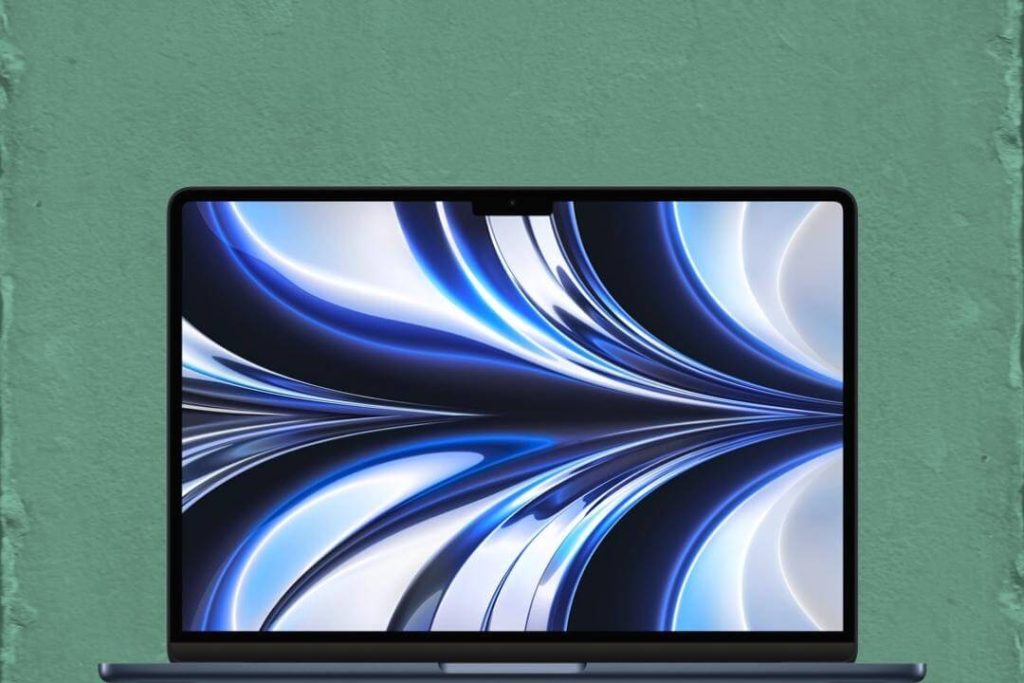
|
Apple MacBook Air M2
|
|
Check Price |
Best Overall
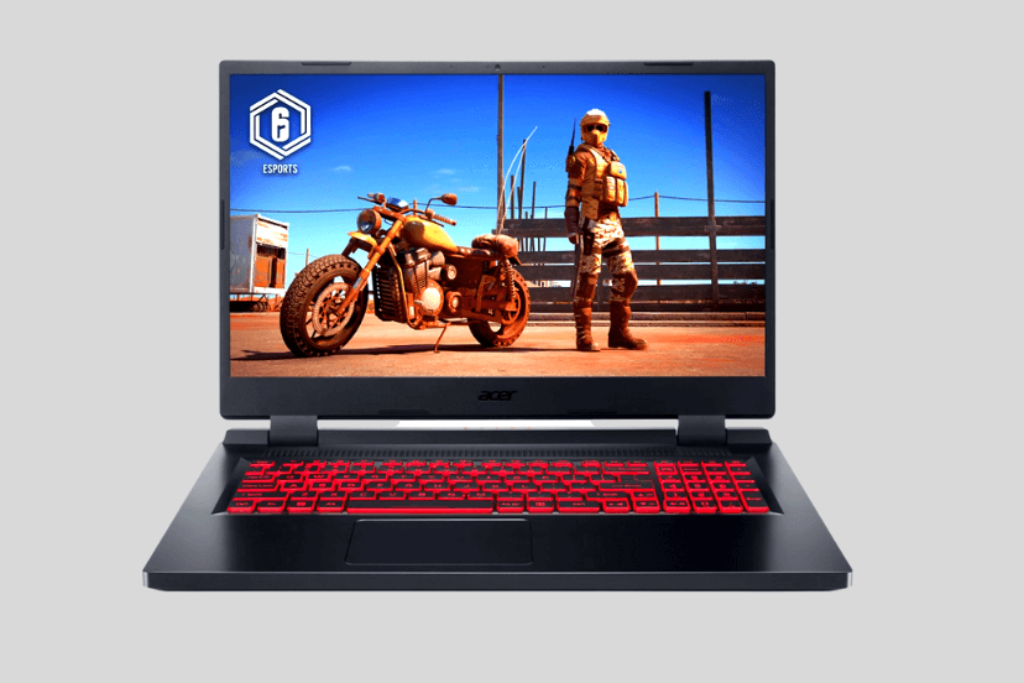
|
Acer Nitro 5
|
|
Check Price |
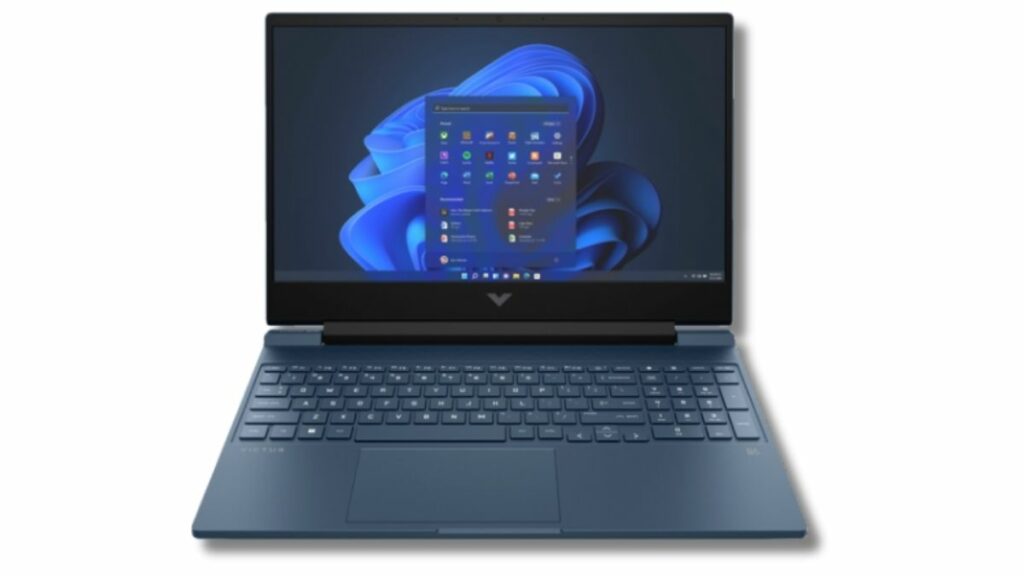
|
HP Victus 15
|
|
Check Price |
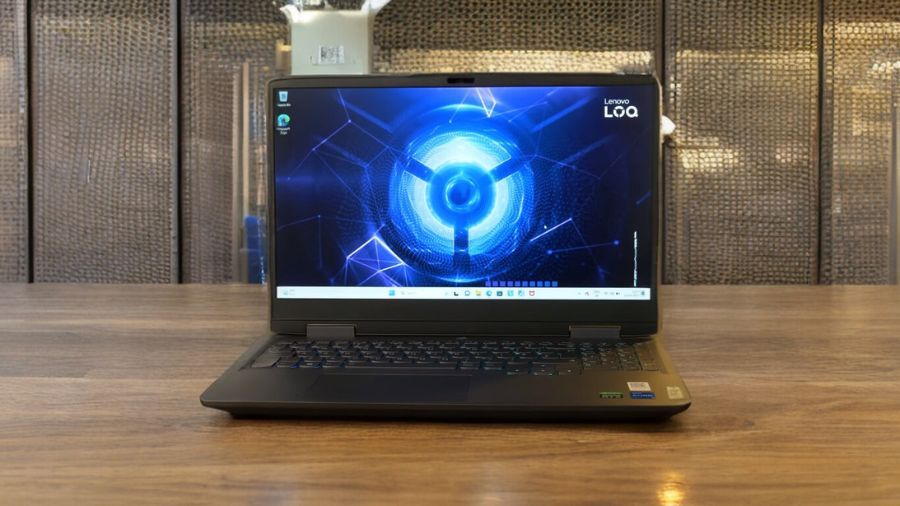
|
Lenovo LOQ 15
|
|
Check Price |
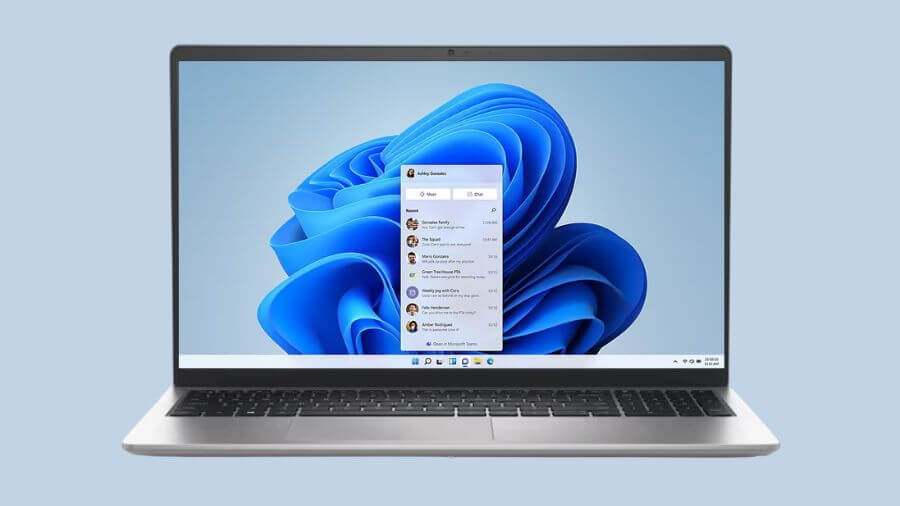
|
Dell Inspiron 15
|
|
Check Price |
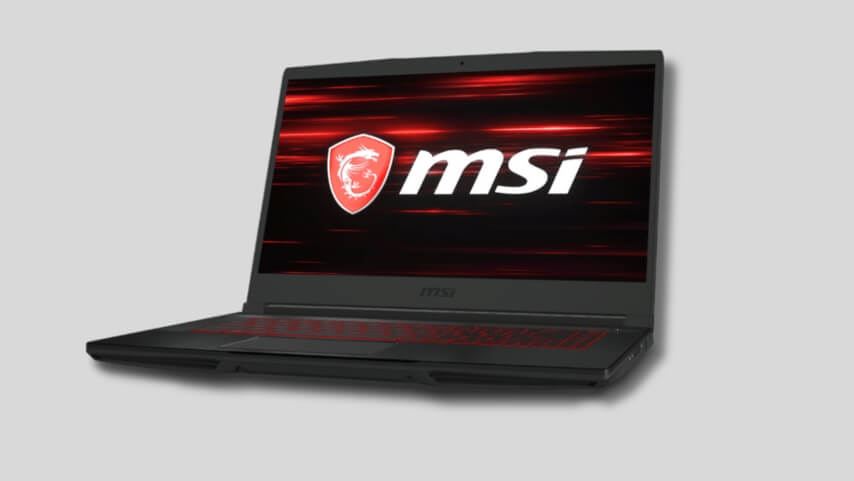
|
MSI Thin GF63
|
|
Check Price |
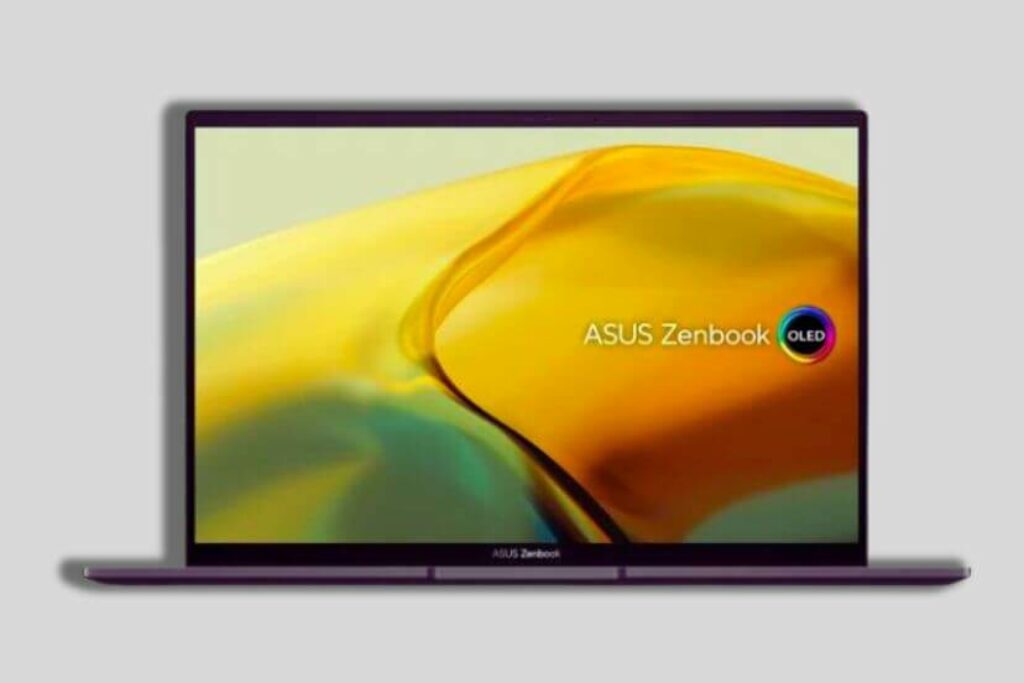
|
ASUS ZenBook 14
|
|
Check Price |
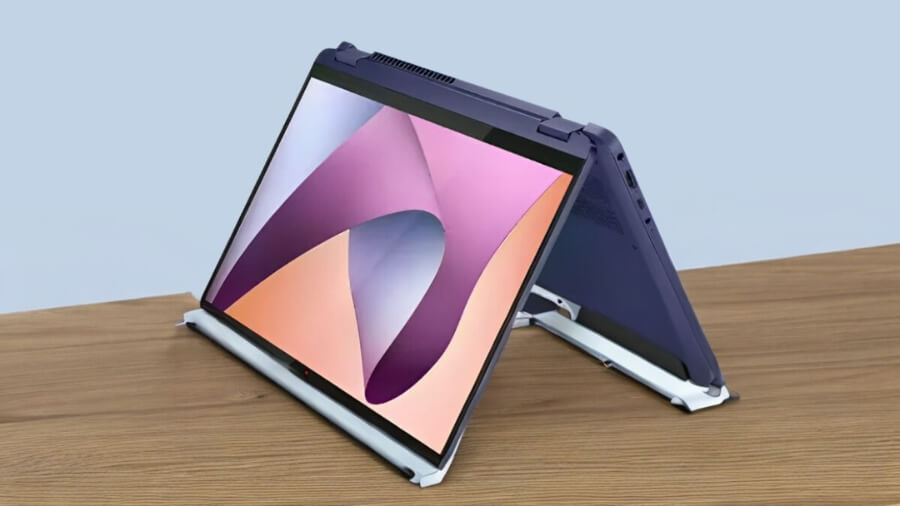
|
Lenovo IdeaPad Flex 5
|
|
Check Price |
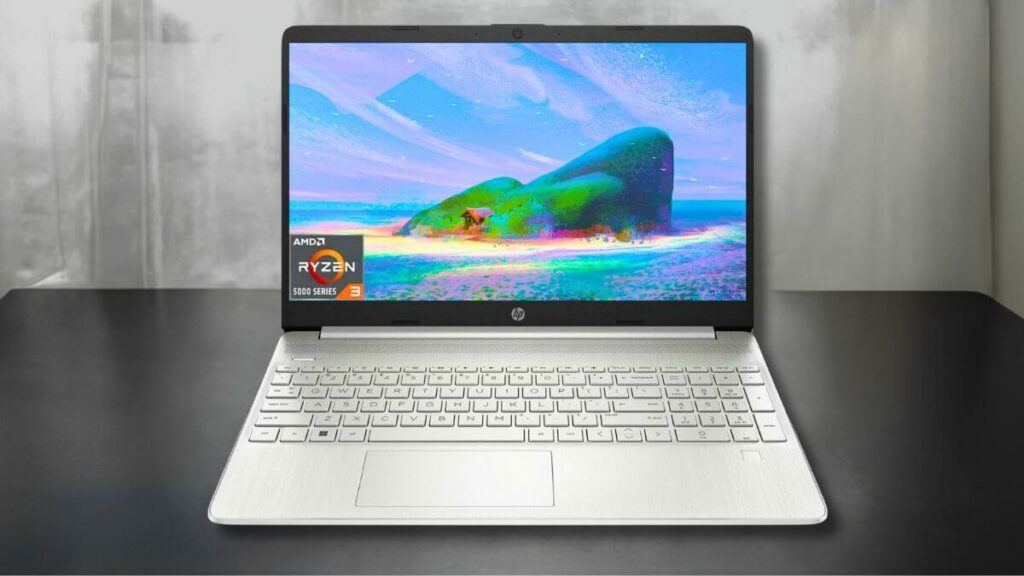
|
HP 15
|
|
Check Price |
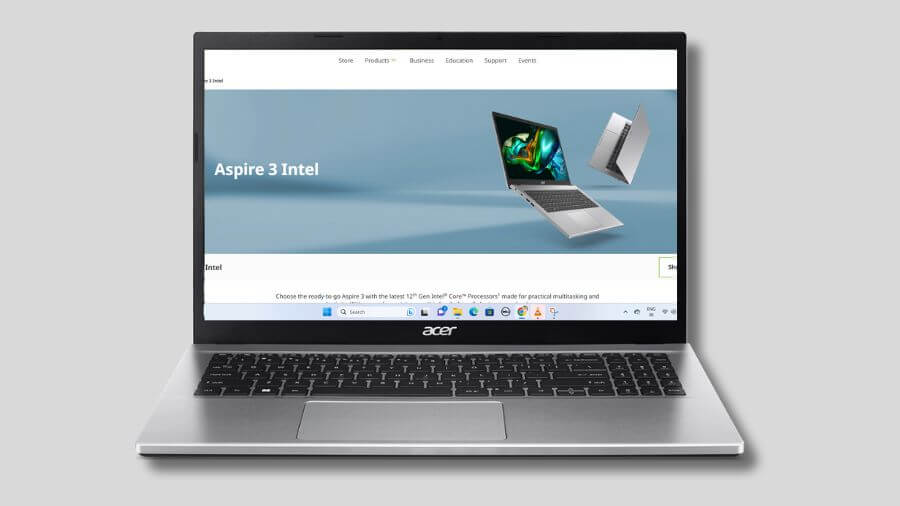
|
Acer Aspire 3
|
|
Check Price |
1. Apple MacBook Air M2

Specifications
| CPU (Processor) | Apple 8-core M2 chip CPU and 16-core Neural Engine Processor |
| GPU | Apple 10-core M2 GPU |
| RAM | 8GB Unified Memory |
| Storage | 256GB SSD |
| Screen | 15.3-inch Liquid Retina Display (2880×1864) pixels, LED-backlit, 500 nits brightness |
| Weight | 3.3 pounds (1.51 kg) |
| Battery Life | Up to 18 hours |
| Others | Two Thunderbolt / USB 4 ports, Wi-Fi 6, Bluetooth 5.3, Fingerprint sensor |
| PROS |
|---|
| ✔ 1080p FaceTime HD Camera |
| ✔ Excellent Battery Performance |
| ✔ Blazing-fast CPU and GPU performance |
| ✔ Latest ports and connectivities |
| ✔ Sleek and Stylish Design |
| CONS |
|---|
| ✘ No USB Type-A port |
| ✘ Not for Gaming |
Powered by a dedicated integrated Apple M2 chip, the new Apple MacBook Air M2 represents a breakthrough in notebook performance. If you are an Engineering student, the versatility of this notebook will make you particularly appealing. It has a stunning screen, a well-designed keyboard with large keys, a Touch Bar with dedicated shortcut keys, and a large trackpad that simplifies tasks. This Apple MacBook Air M2 has unique features immediately catching people’s attention.
With up to 18 hours of battery life and impressive specs, it ensures a seamless and uninterrupted creative experience. Its sleek metal chassis, attractive aesthetic, and soothing gray and rounded screen edges enhance its attraction. The tactile experience of this laptop is truly outstanding.
It has a 15.3-inch Liquid Retina Display with 500 nits screen brightness and 2880×1864 pixels, providing fantastic screen brightness and quality.
It’s a lightweight and portable notebook weighing only 3.3 pounds (1.51 kg), making it one of the best laptops for Engineering students for Named Entity Linking (NEL) and Dialogue Systems tasks.
The performance of the Apple MacBook Air M2 is nothing short of extraordinary, with the Apple 8-core M2 chip CPU that works tirelessly to deliver best-in-class performance for various tasks. The laptop also has a 16-core Neural Engine that enhances the overall user experience and makes tasks feel fluid.
It also has an Apple 10-core M2 GPU, which is important for mechanical or architectural engineering students. It helps handle 3D modeling, rendering, and simulations smoothly and efficiently.
Having 8GB Unified Memory means your programs load in seconds, and with 256GB SSD, fast boot times are a signature feature of Apple laptops.
These specs, combined with the ability to multitask online and offline smoothly, make the MacBook Air M2 an ideal choice for Engineering students.
In terms of connectivity, the laptop provides 2 Thunderbolt ports via USB 4 ports and a variety of other ports, such as a MagSafe charging port and a headphone jack.
Read our Apple MacBook Air M2 Review
2. Acer Nitro 5

CHECK Today’s Best Deals
Specifications
| CPU (Processor) | 12th Gen Intel Core i5-12500H (6 cores, 12 threads, Boost up to 4.5 GHz) |
| GPU | 4GB NVIDIA GeForce RTX 3050 |
| RAM | 8GB DDR4 3200MHz |
| Storage | 512GB NVMe Gen 4 SSD |
| Screen | 15.6-inch full HD (1920 x 1080) 144Hz widescreen LED-backlit IPS display |
| Weight | 5.51 lbs (2.5 kg) |
| Battery Life | Up to 7 hours |
| Others | Red Backlit Keyboard, Thunderbolt 4, Wi-Fi 6, Bluetooth 5.1, Windows 11 Home |
| PROS |
|---|
| ✔ Strong Build Quality |
| ✔ Smooth Graphics Performance |
| ✔ Powerful CPU with Powerful GPU |
| ✔ Great Backlit Keyboard |
| ✔ Cheap Price |
| CONS |
|---|
| ✘Bulky Design |
| ✘Noisy Fan |
The Acer Nitro 5 gaming laptop is awesome for people who want a laptop that’s not too cheap or too expensive. It has a strong 6-core i5-12500H processor and a dedicated NVIDIA GeForce RTX 3050 graphics card. You can expect good performance with more than 100 frames per second, making your overall experience top-notch!
Its multitasking capabilities are unparalleled. Play Valorant, PUBG, or Assassin’s Creed with your favorite characters without lag. There is no doubt that the graphics cards deserve praise. However, adjust the settings to get the best results with your cards to perform Part-of-Speech Tagging (POS) and Text Classification tasks.
It has 8GB DDR4-3200MHz memory to run multiple applications simultaneously and 512GB NVMe Gen 4 SSD storage to store all your files and data.
Don’t worry about the heat generated; this machine has impressive heat management in dual fans, dual intakes, and a quad-exhaust port design. The laptop casing is designed to let heat escape.
Acer Nitro 5 has a 15.6-inch FHD LED-backlit IPS display with a 144Hz refresh rate and 1920 x 1080 screen resolution, providing an amazing widescreen visual experience.
A strong and sturdy laptop can handle the challenges of student life, like carrying it around between classes, labs, and home. This laptop weighs 5.51 pounds (2.5 kg), which is a problem when traveling around. It has a battery life of up to 7 hours.
This laptop’s keyboard is quite useful. The keys are well-spaced, and some may prefer a “clicky” keyboard. You can disable the automatic backlight shutoff feature on your laptop using the Nitrosense app. Other than that, Plastic doesn’t feel like Plastic. You get a premium look and feel.
Talking about ports and connectivity, it has Wi-Fi 6 and Bluetooth 5.1 wireless connectivity, a USB 3.2 Type-C Gen 2 Port, three USB-A 3.2 Gen 1 and Gen 2 ports, an HDMI 2.1 port, an Ethernet port, and an audio combo jack.
Read our Acer Nitro 5 Review
3. HP Victus 15

CHECK Today’s Best Deals
Specifications
| CPU (Processor) | 13th Gen Intel Core i5 13420H (2.1 GHz to 4.6 GHz, 12MB cache, 8 cores, 12 threads) |
| GPU | NVIDIA GeForce RTX 3050 (4 GB GDDR6 VRAM) |
| RAM | 16 GB DDR4-3200 MHz RAM |
| Storage | 512GB PCIe NVMe SSD |
| Screen | 15.6-inch FHD (1920 x 1080), 144 Hz, IPS, micro-edge, anti-glare, 250 nits, 45% NTSC |
| Weight | 5.06 lbs (2.3 kg) |
| Battery Life | 4-cell, 70 Whr, Li-ion polymer (up to 10.5 hours) |
| Others | Backlit Keyboard, Wifi 6, Bluetooth 5.3, Windows 11 Home |
| PROS |
|---|
| ✔ Affordable Price |
| ✔ Latest and Powerful Processor |
| ✔ 144 Hz Display |
| ✔ Sturdy Build and Design |
| ✔ Excellent Battery Life |
| CONS |
|---|
| ✘ No Thunderbolt Port |
The HP laptops featured in this review offer an impressive blend of style, functionality, and overall experience, all at a very affordable price. The HP Victus 15 has a mica-silver plastic chassis, most notably the logo on the back of the lid. It looks like a gaming-style charm that’s really eye-catching.
The HP Victus 15 has a 13th-generation Intel Core i5 13420H processor. This 8-core, 12-thread unlocked CPU has a base clock frequency of 2.1 GHz and can easily boost to 4.6 GHz, thanks to Intel’s Max Boost support, which can perform Sentiment Analysis and Information Retrieval tasks.
The HP Victus 15 comes with 16 GB DDR4-3200 MHz RAM, which can be upgraded for additional requirements via available slots, up to 32GB, and a 512GB PCIe NVMe SSD. This means you can leave your challenging tasks to the Victus 15, which will easily handle them.
This laptop has a 15.6-inch, anti-glare, micro-edge panel in the display department that offers Full HD visuals. The NVIDIA GeForce RTX 3050 GPU with 4 GB GDDR6 dedicated video memory ensures smooth performance in most mid-to-hard-core games.
It weighs 5.06 pounds (2.3 kg). Its weight is decent, and you can carry it anywhere, but it cannot rest on your shoulders for long hours. The 4-cell, 70 Whr, Li-ion polymer battery provides around 10 hours and 30 minutes of runtime, making it a solid choice for a gaming laptop.
A battery that lasts long is important for being productive all day, especially when going to lectures, working on projects in different places, or studying without access to power outlets.
This HP Victus 15 features a full-size backlit keyboard and a variety of ports, such as 2 USB-A 3.1 ports, a USB Type-C port, an HDMI port, an audio combo jack, and a microSD card reader. It also has Wi-Fi 6 and Bluetooth 5 wireless connection and is powered by Windows 11 Home.
Read our HP Victus 15 Price Review
4. Lenovo LOQ 15

CHECK Today’s Best Deals
Specifications
| CPU (Processor) | 13th Gen Intel Core i5-13420H (8 core, 12MB cache, 12 threads, 3.40GHz to 4.60GHz) |
| GPU | NVIDIA GeForce RTX 3050, 6GB GDDR6 VRAM |
| RAM | 16GB DDR5 RAM 5200 MHz |
| Storage | 1TB M.2 PCIe Gen4 SSD |
| Screen | 15.6″ FHD (1920 x 1080), IPS, Anti-Glare, 350 nits, 144Hz, LED Backlight, Narrow Bezel |
| Weight | 5.28 lbs (2.4 kg) |
| Battery | 60Whr, 4-cell, Lithium-polymer (up to 7 Hours) |
| Others | Backlit Keyboard, Wi-Fi 6, Bluetooth 5, Windows 11 Home |
| PROS |
|---|
| ✔ Powerful Gaming Laptop |
| ✔ Smooth Graphics Performance |
| ✔ 1080p FHD Webcam |
| ✔ Solid Build Quality |
| ✔ Latest wireless connectivity |
| CONS |
|---|
| ✘ Little bit Heavy |
| ✘ No Thunderbolt Port |
The Lenovo LOQ 15 is the most budget-friendly gaming laptop on this list, making it a suitable choice for engineering students. This shows you can get a great laptop without spending too much money.
One of its most eye-catching features is the stunning 15.6-inch FHD IPS Anti-Glare screen with a 144Hz refresh rate. It delivers impeccable color accuracy and image quality that exceeds contemporary standards. The narrow bezel is smoother than those of a few other competitors.
Gaming on this laptop is an enjoyable experience, especially when running demanding games like Assassin’s Creed: Mirage. A NVIDIA GeForce RTX 3050 graphics card with 6GB GDDR6 VRAM ensures a smooth gaming experience and stable frame rates.
Under the hood, the Lenovo LOQ 15 laptop has the power of a 13th-generation Intel Core i5-13420H processor, which is part of the newer Raptor Lake architecture. It has a base clock speed of 3.40GHz and can boost to 4.6GHz to handle gaming and multitask efficiently.
The 16GB DDR5 RAM 5200 MHz is enough for users who want to play newer games with higher memory requirements. On the plus side, the laptop offers plenty of storage space, with a 1TB M.2 PCIe Gen4 SSD to perform Named Entity Linking (NEL) and Word embedding tasks efficiently.
Lenovo’s commitment to gaming keyboards shows in the LOQ, which features a full-sized backlit keyboard. It adds a touch of ambiance to your gaming or movie-watching experience in dimly lit environments. You can also customize the backlight to suit your mood.
Regarding connectivity, the laptop may only meet some expectations, missing key ports like Thunderbolt 4 and an SD card reader, which disappoints some users. That said, it offers a USB Type-C port, three USB Type-A ports, an audio combo jack, and an HDMI jack to suit various connectivity needs.
It’s important to note that powerful gaming laptops like the Lenovo LOQ 15 tend to have limited battery life. Still, this one will provide up to 7 hours of battery life and has a 60Whr, 4-cell, Lithium-polymer battery.
Read our Lenovo LOQ 15 Gaming Laptop Review
5. Dell Inspiron 15

CHECK Today’s Best Deals
Specifications
| CPU (Processor) | 13th Gen Intel Core i5-1335U (12MB Cache, 4.60 GHz) Processor |
| GPU | Shared Intel Iris Xe Graphics |
| RAM | 16 GB, 2 x 8 GB, DDR4, 3200 MHz Memory |
| Storage | 512GB M.2 PCIe NVMe Solid State Drive |
| Screen | 15.6-inch FHD (1920 x 1080) 120Hz 250 nits WVA Anti-Glare LED-Backlit Display |
| Weight | 3.57 lbs (1.62 kg) |
| Battery Life | 3 Cell, 41 Wh (up to 9 hours 15 minutes) |
| Others | Backlit Keyboard, Windows 11 Home, Wi-Fi 6, Bluetooth 5 |
| PROS |
|---|
| ✔ Affordable Price |
| ✔ Latest and Powerful Processor |
| ✔ Sturdy build and design |
| ✔ Excellent Battery Life |
| ✔ It has Adaptive Thermals for cooling |
| CONS |
|---|
| ✘ No Thunderbolt Port |
The Dell Inspiron 15 secures this position with some commendable features that cannot be ignored.
A strong multi-core processor can manage complicated calculations and simulations, which are often needed in engineering software like CAD (Computer-Aided Design) applications. The Dell Inspiron 15 laptop is powered by a 13th-generation Intel Core i5-1335U with 10 cores and 12 threads, a 12MB L3 cache, and a turbo speed of up to 4.6 GHz.
Having plenty of RAM, like 16GB or more, helps you do many things at once without any problems. It also lets you handle big sets of data, run simulations, and use virtual machines, which are often part of engineering tasks, really well. This laptop has 16 GB DDR4-3200 MHz memory and 512GB M.2 PCIe NVMe Solid State Drive to accommodate all your files with ultra-fast transfer rates and minimal boot time.
Talking about boot time, Windows 11 Home acts as the operating system and controls the overall operations. It also has a full-sized backlight keyboard to work at night as well.
It features a 15.6-inch FHD anti-glare LED-backlit display with 1920 x 1080 resolution. To ensure you see smooth, eye-catching visuals, the monitor incorporates Intel Iris Xe graphics card support, making it one of the best laptops for Engineering students that can perform Information Retrieval, Language Modeling, and Dependency Parsing tasks efficiently.
Additionally, it has 802.11ax Wi-Fi 6 and Bluetooth for wireless connectivity. There’s a USB 3.2 Gen 1 Type-A port, a USB 3.2 Gen 1 Type-C full function, a USB 2.0 port, an SD card reader, and a headphone jack. This laptop weighs approximately 3.57 pounds (1.62 kg), making it portable.
6. MSI Thin GF63

Specifications
| Processor | 12th Gen Intel Core i5-12450H (8 Core, 1.3-4.5 GHz) |
| Graphics | NVIDIA GeForce RTX 2050 |
| RAM | 8GB DDR4 3200MHz Memory |
| Storage | 512GB NVMe SSD |
| Screen | 15.6-inch FHD IPS LED-backlit 144Hz Display |
| Weight | 4.10 lbs (1.86 kg) |
| Battery Life | Up to 6 hours |
| Others | Backlit Keyboard, Wi-Fi 6, Bluetooth 5.1, and Windows 11 Home OS |
| PROS |
|---|
| ✔ DLSS support with the potent RTX 4050 GPU |
| ✔ Handles most games smoothly |
| ✔ Lightweight for its size |
| ✔ Easily upgradeable for future gaming needs |
| CONS |
|---|
| ✘ Screen is not very bright. |
| ✘ Gets hot when playing games. |
| ✘ Battery life is just okay, not great. |
My experience with the MSI Thin GF63 has been great. It’s reliable, its 0.85-inch thin dimensions make it easy to carry around, and its signature blood-red backlight keyboard can be hard on the eyes.
The MSI Thin GF63 is a strong contender in this list of gaming laptops because of its top-notch hardware specs, design, quality, and aesthetics.
Depending on the engineering software used, compatibility with the required operating system is essential, and the Windows 11 Home operating system powers this laptop.
Explore the advanced capabilities of your laptop with a 15.6-inch FHD IPS LED-backlit display with a 144Hz refresh rate for clear, lifelike images. The precise color gamut makes colors vibrant and accurate, especially when watching YouTube videos or playing video games.
This laptop also has minimal bezels, so you won’t be bothered by a black border around the screen, which will be helpful for Text Mining, machine learning, etc.
MSI Thin GF63 has a 12th-generation Intel Core i5-12450H and a NVIDIA GeForce RTX 2050 graphics card. The laptop also has 8GB DDR4-3200 MHz memory and 512GB NVMe SSD storage.
The laptop’s price is very affordable; it is worth a few bucks as the keyboard experience is heavenly. After all, MSI is known for making great gaming keyboards with perfectly balanced travel times and responsive feedback.
The MSI Thin GF63 also has many ports at its base, such as a USB 3.2 Type-C port, three USB-A 3.2 ports, an Ethernet jack, an HDMI port, and an audio-mic combo.
This laptop’s portability is average as its weight is 4.10 pounds (1.86 kg), and has up to 8 hours of battery life. However, you can set the power options in MSI Dragon Center to save battery life.
Read our MSI Thin GF63 Gaming Laptop Review
7. ASUS ZenBook 14

| PROS |
|---|
| ✔ Versatile Port Selection |
| ✔ 1080p Webcam |
| ✔ Affordable |
| ✔ Lightweight and Portable |
| CONS |
|---|
| ✘ Limited Gaming Performance |
ASUS ZenBook 14 is a laptop designed to provide optimal performance for video editing.
It comes with a 13th-generation Intel Core i5-13500H processor, 8GB DDR5 SDRAM with 4800 MHz memory speed, and a 1TB PCIe NVMe M.2 SSD storage. The CPU has 18 MB cache and 12 cores. All these features together make the laptop agile and hard-working. It’s good enough for Preprocessing and Natural Language Understanding (NLU) tasks.
It’s a better trade-off when choosing a laptop with a battery life of up to 10 hours over unnecessary performance. It also has an FHD webcam for better video call quality.
This laptop is equipped with Intel Iris Xe Graphics, which provides excellent graphics performance and helps with video rendering. You can also play decent online games like CS: GO and DOTA 2 with reasonable frame rates.
This laptop can easily run Adobe Creative Cloud and other creative software without any hassle or slowdown. Additionally, you can use it as a portable media center to watch movies on the go.
A high-resolution and accurate color screen is crucial for looking at detailed engineering drawings and simulations. In certain engineering fields, a bigger screen can be helpful so a 14.5-inch, 2.8K, OLED NanoEdge touchscreen display with narrow bezels is simply stunning.
The Asus ZenBook 14’s keyboard is quite comfortable to use and has a backlight feature. The keys are spaced far enough apart to make them easy to find without looking down.
This laptop is undoubtedly one of the most portable options, weighing only 3.44 pounds (1.56 Kg), and is powered by Windows 11 Home OS.
Talking about ports, it has one USB 3.2 Gen 2 Type-A port, two Thunderbolt 4 that support display/power delivery, an HDMI 2.1, and a 3.5mm audio combo Jack.
8. Lenovo IdeaPad Flex 5

Specifications
| CPU (Processor) | AMD Ryzen 5 7530U Processor (2.00 to 4.50 GHz, 6 Cores, 12 Threads, 16 MB Cache) |
| GPU | AMD Radeon graphics |
| RAM | 8 GB LPDDR4X-4266MHz |
| Storage | 512 GB M.2 2242 PCIe Gen4 SSD |
| Screen | 14-inch (1920 x 1200), IPS, Glare, Touch, 45%NTSC, 300 nits, 60Hz, LED Backlight |
| Weight | 3.42 lbs (1.55 kg) |
| Battery Life | Up to 10 hours |
| Others | Wi-Fi 6, Bluetooth 5.1, Fingerprint, and Windows 11 Home |
| PROS |
|---|
| ✔ Stunning Display with fewer Bezels |
| ✔ Powerful Processor at this Price Range |
| ✔ Free Lenovo Digital Pen |
| ✔ Backlit Keyboard with Responsive Touchscreen |
| ✔ 1080P Webcam |
| CONS |
|---|
| ✘ Limited upgradability |
| ✘ Limited gaming performance |
Check out this Lenovo IdeaPad Flex 5 2-in-1 laptop. It’s one of the best laptops for Engineering Students.
Get this all-in-one powerhouse that’s slim and stylish and less than an inch thick when closed. It’s a 2-in-1, meaning you can use it as a laptop and a tablet. Plus, it comes with a digital pen, perfect for all your creative endeavors.
You can use a digital pen to create all your ideas on the touch screen. It is integrated with AMD Radeon Graphics to give you an ultra-smooth and beautiful graphics experience. The Lenovo IdeaPad Flex 5 has a 14-inch IPS display with narrow bezels on all four sides and FHD+ (1920 x 1200) pixel resolution, which can be tilted to 360 degrees to place it comfortably.
It has a powerful 6-core AMD Ryzen 5 7530U processor, 8 GB LPDDR4X-4266MHz memory, and 512 GB M.2 2242 PCIe Gen4 SSD storage so you can do all your busy multitasking, browsing, numerical analysis, and more.
This processor’s speed can be boosted up to 4.50 GHz for ultra-fast performance. Connect wirelessly via 802.11AX (2 x 2) Wi-Fi 6 and Bluetooth 5.1, and use multiple ports for simultaneous data transfer )and more.
Yes, the battery is very convenient, which can last up to 10 hours, and supports rapid-charging technology where the laptop can give you 2 hours of runtime while charging for only 15 minutes.
It is a portable laptop weighing only 3.42 pounds (1.55 kg). It comes with the default Windows 11 Home operating system, a fast fingerprint reader, and an amazing backlit keyboard suitable for typing in dim light conditions.
9. HP 15

CHECK Today’s Best Deals
| CPU (Processor) | AMD Ryzen 3 5300U (up to 3.8 GHz, 4 MB L3 cache, 4 cores, 8 threads) |
| GPU | AMD Radeon Graphics |
| RAM | 8 GB DDR4-3200 MHz SDRAM (1×8 GB) |
| Storage | 256 GB of PCIe NVMe M.2 SSD |
| Screen | 15.6-inch, HD 1366 x 768 Pixels, Micro-Edge Display |
| Weight | 3.7 pounds (1.69 kg) |
| Battery Life | Up to 7 hours |
| Others | Bluetooth 5, Wi-Fi 6, and Windows 11 Home |
| PROS |
|---|
| ✔ Powerful Processor |
| ✔ Excellent Battery Backup |
| ✔ Looking Stylish |
| ✔ Multi-touch gesture support |
| ✔ Four sides narrow Bezels |
| ✔ Responsive trackpad |
| CONS |
|---|
| ✘ The display should be Full HD |
| ✘ Reduced performance under heavy workloads |
The HP 15 has a micro-edge screen, a pleasant keyboard, and a smooth trackpad, all neatly packed into a slim and stylish chassis that makes it stand out, especially considering its affordable price.
The 15.6-inch screen has a bright view feature, eliminating the limitation of working outdoors due to sunlight. You can’t see your reflection even in bright light. So, this laptop performs well for videos, streaming, and even working in bright environments. The narrow bezels look premium. However, 1366 x 768-pixel resolution is not very suitable for engineering students but is the cheapest option.
At a turbo speed of up to 3.8 GHz, the HP 15 has an AMD Ryzen 3 5300U mobile processor. However, it runs on 4 cores and 8 threads, providing full performance for multiple tasks in this price range. It also has AMD Radeon Graphics for graphics-intensive tasks like Simulations and Geographic Information Systems (GIS).
When it comes to RAM and storage, it’s equipped with 8GB of DDR4-3200 MHz memory, allowing you to run multiple applications simultaneously smoothly. The 256GB PCIe NVMe M.2 SSD storage ensures fast and spacious storage. Having an SSD, which stands for Solid State Drive, is excellent because it lets you access your data quickly, makes your computer start up fast, and efficiently manages large engineering files.
However, expect it to be manageable with intensive tasks like editing 4K videos and running countless Chrome tabs.
It is a portable laptop weighing only 3.7 pounds (1.69 kg). A portable laptop allows Engineering students to carry their work with them and remain productive wherever they go. Although the performance is above average, the laptop has a runtime of up to 7 hours.
HP 15 has many ports, such as a super-speed USB Type-C port, two USB-A ports, an HDMI port, an SD card reader, and an audio combo jack.
10. Acer Aspire 3

Specifications
| CPU (Processor) | AMD Ryzen 5 7520U Quad-Core Mobile Processor (Up to 4.3 GHz) |
| GPU | Integrated AMD Radeon Graphics |
| RAM | 8GB LPDDR5 |
| Storage | 512GB NVMe SSD |
| Screen | 14-inch FHD (1920 x 1080); 60Hz; LCD, IPS Display |
| Weight | 3.09 lbs (1.4 Kg) |
| Battery Life | 56Wh, Lithium-ion (up to 10 hours) |
| Others | Wi-Fi 6, Bluetooth 5, and Windows 11 Home |
| PROS |
|---|
| ✔ Cheap Price |
| ✔ Powerful Processor |
| ✔ Great Upgradability |
| ✔ Responsive Keyboard and Touchpad |
| ✔ Enough RAM and Storage |
| CONS |
|---|
| ✘ Lower-quality built-in speakers |
| ✘ No Backlit Keyboard |
The Acer Aspire 3 is a slim and lightweight laptop, but it focuses more on having a good display than gaming performance. In this price range, expecting the highest gaming performance could be better. Most laptops in this category are designed for casual rather than intense gaming sessions.
This laptop supports casual gaming. Even though it is powered by AMD Radeon graphics, supplemented by AMD Ryzen 5 7520U Quad-Core Mobile Processor and 8GB LPDDR5 RAM, the game will still run at low to medium settings to run smoothly. It also has 512GB NVMe SSD storage to store all your data and process data quickly.
The Acer Aspire 3 has dual-channel memory support. Dual channel is actually a good thing as it helps the GPU perform at its best. Once you’ve done this, you can play Dota 2 on low settings, League of Legends on medium settings, CS: GO on medium settings, Quake on high settings, Hammer: Champions, and other games.
This laptop has a 14-inch FHD LCD IPS display with a 60Hz refresh rate and 1920 x 1080 screen resolution, providing a good visual experience. You can watch movies, play games, and work on Machine Translation and Language Modeling tasks without any problem, making it one of the best laptops for Engineering students.
It has an aluminum casing and a sturdy build. The case doesn’t show fingerprints compared to plastic and is very nice.
Talking about battery life, it can last up to 10 hours on minimal settings. Getting these features on a budget laptop under $500 is hard, but Acer makes it possible. It is a super portable laptop weighing only 3.09 pounds (1.4 Kg).
It features Wi-Fi 6 and Bluetooth 5, ensuring you get fast and dependable wireless internet. This is really important for doing online research, collaborating, and using cloud resources.
Read our Acer Aspire 3 Review
Final Words
In engineering, getting a good budget-friendly laptop is like finding a reliable sidekick. This guide has taken you through a list of top laptops that balance performance and price.
Remember, it’s not just about cost; it’s about picking a laptop that fits your engineering needs. Whether you choose the power-packed Apple MacBook Air M2 or the affordable Acer Aspire 3, each option is a smart choice for your engineering journey.
Your laptop is more than a device; it’s your partner in creativity and problem-solving. So, pick the right budget-friendly laptop, and here’s to your exciting journey in engineering.
FAQs
Engineering students should invest in a powerful and portable laptop since they need to carry it to college, university, or school. If a laptop lacks portability, difficulties may arise when taking it outdoors.
Students often use laptops in various places, so it’s crucial to consider weight before selecting.
Gaming Laptops
A gaming laptop stands out as the optimal choice for engineering students. It boasts a powerful processor, a dedicated graphics card, ample RAM, and storage—essential for tasks like 3D rendering, coding, machine learning, CAD, MATLAB, etc.
Traditional/Business Laptops
While traditional and business laptops are suitable, a gaming laptop takes the lead for engineering work. Traditional student laptops offer good battery life and portability, making them versatile for various tasks.
Touchscreen/2-in-1 Notebooks
Touchscreen laptops, while portable with decent battery life, may not match the power of gaming or traditional laptops.
Although 2-in-1 notebooks have unique features like presentation and drawing capabilities, they might not meet the demanding requirements of engineering tasks. Engineering students often need more powerful components, such as processors and graphics cards, which are less available in 2-in-1 notebooks.
The amount of RAM a laptop needs depends on your specific engineering tasks. Generally, a laptop with 8GB of new-generation RAM is sufficient for programming, compiling, and video editing.
However, for more demanding applications such as 3D modeling and simulation, opting for a laptop with at least 16GB of memory is advisable.
Selecting a laptop with 16GB or more RAM ensures you won’t need to upgrade the memory in the next few years. Laptops are less customizable than PCs after purchase, making it more challenging to upgrade components. Therefore, a laptop with plenty of memory is recommended from the start.
It’s always a good idea to check the system requirements for the specific engineering software you’ll use and consider your long-term storage needs.
For everyday task like writing documents, browsing the internet, and doing basic computer work, a laptop with 256GB of storage is usually good enough.
If you’re using special programs like AutoCAD, 3D modeling, or rendering software, getting a laptop with 512GB of storage or more is better. These programs often need much space for big project files and data.
If you’re editing videos or running simulations that create big files, you might need a laptop with 1TB of storage or more.
If you plan to use many engineering programs simultaneously or work on big projects, it’s a good idea to have even more storage, like 1TB or more.
For day-to-day tasks, an integrated graphics card is usually sufficient.
If you’re on a tight budget and primarily doing basic engineering tasks, then an integrated graphics card will be enough. However, if your work involves more graphics-intensive applications, it is recommended to purchase a laptop with a dedicated GPU.
A dedicated graphics card may not be necessary for all engineering tasks, but it can significantly improve the performance of specific applications.
Tasks involving 3D modeling, rendering, simulation, complex analysis, and virtualization may also benefit from a dedicated graphics card, especially if your software is optimized for GPU acceleration.
Check the system requirements for the engineering software you will use. Some applications are designed to take advantage of dedicated GPUs, and having a dedicated GPU can significantly improve performance.
Windows is often a good choice due to its compatibility with engineering software. But if your programming or personal preferences lead you to choose macOS or Linux, ensure the software you need is compatible. Check with your academic institution or engineering department for specific recommendations or requirements.
Windows: Most people use Windows, the first choice for engineering students. It is a powerful and flexible system that can be used with many different software programs. It is very easy to use, especially for those just starting.
macOS: macOS is the system that runs on Apple computers. It is a special system known for its stability, speed, and high security. Engineering students love it because it works better with CAD software and other engineering programs than any other operating system.
Linux: Linux is a special operating system that’s free to use and can be changed a lot. It’s not as common as Windows or macOS, but many engineering students like it because they can make it just how they want it and it’s powerful.

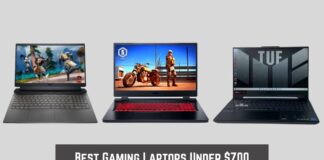


![8 Best 8GB RAM Laptops [2024] Best 8GB RAM Laptops](https://pcvenus.com/wp-content/uploads/2022/12/Best-8GB-RAM-Laptops.jpg)